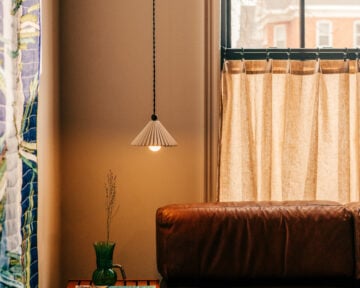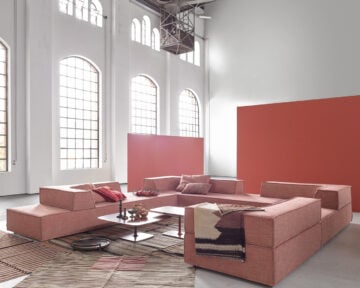Get to Know: CAB Architects

When Brian Hagood and Charisma Panchapakesan moved to Toronto in 2015, they had three things on their mind: buying a home, starting a family, and founding their architectural design studio CAB Architects. After a decade in New York City, where the pair specialized in residential design and the renovation of Brooklyn brownstones, they quickly established themselves as a firm serious about designing Toronto’s old homes.

“We believe that homes must be made beautiful in way that is comfortable for the everyday experience, and that architecture is too valuable to treat as purely a reflection of the current fashion,” says Panchapakesan. “It must build on what the past gives us in a way that meets the present moment.” In conversation with Designlines, the architects share more about their firm’s point of view, current projects in the works, and their thoughts on Toronto’s distinct architectural identity.

The Argyle by CAB Architect included a gut renovation of the downtown rowhouse.
Can you share more about your combined experience, and CAB’s approach to design?
We both worked in New York City doing residential work before moving to Charisma’s hometown of Toronto. It provided a great foundation because New York has so much beauty to offer and people to learn from. People recognize the city’s history and wish to preserve and enhance it. Toronto has that heritage too, though, it’s often a little more raw. We try to help our clients see what can be done to build on the good that’s already here.
If you had to describe your style in a few sentences, what would you say?
Our style is warm and embellished. We achieve this by layering details, textures, and colours to create spaces that feel rich and inviting, steering away from a cold and minimal aesthetic. Also, much of our work is rooted in traditional styles, updated and adapted creatively to be interesting and accommodating to our clients’ lifestyles and preferences.

In Toronto’s Riverside neighbourhood, CAB Architects took on a third floor renovation to create a luxury principal bedroom and ensuite.
What types of projects do you seek out most?
We prefer to work directly with homeowners, and our favourite neighbourhoods are the older, walkable ones. This means most of CAB Architects’ projects are renovations and additions to older houses. We love that aspect because there are usually a lot of great existing elements to work with. There are challenges with small spaces, but these are fun and rewarding to puzzle out.

The Riverdale Laneway spans 1,200 square feet and was designed to blend in with the neighbourhoods heritage elements.
What are some of the projects you’re most proud of or excited to get started on?
We have several completed projects that even better reflect our evolving ethos, which we will photograph in 2024. One is a Victorian rowhouse on Gladstone Avenue with a significant restorative facelift and lots of interior colour. Another is an addition to a craftsman on Gilmour Avenue, detached with a light-filled and homey kitchen. There is also a semi-detached on Wright Avenue with a reworked back extension, which turned an awful, oversized mudroom into a wonderfully cozy living room.
Is there a design style that you believe to be unique to Toronto?
Toronto is great because so much of it was built before cars became ubiquitous. That means there are many walkable neighbourhoods with a great community feeling. The houses reflect this: rowhouses, semis, and closely spaced detached homes define our city. This makes street presence important—every house contributes to the feeling of the street and should be designed responsibly. We would like CAB Architects to be known as a studio taking that mission seriously, who look to preserve and better the existing character of these old homes. CABARCHITECTS.CA










